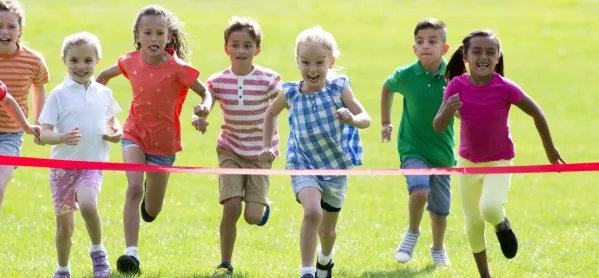Whether delivering PE lessons as a teacher or working as a sport psychologist preparing athletes for the Olympics, the beauty of sport is the opportunity that it gives the educator to support all-round, whole-person development, which includes but is not limited to the promotion of physical health.
The accepted narrative that PE is all about physical activity in primary schools is a narrow one, as it underestimates the full spectrum of learning opportunities that PE has to offer. Broadening understanding and introducing sport psychology into PE frameworks can develop greater self-confidence and transform how pupils see themselves in and outside of sport.
More: Six steps to help primary PE recover from Covid lockdown
Opinion: Four ways PE could become a key part of family life
Teacher applications: Four ways to stand out when applying for a PE job
Athletes recognise the value of mindset in training and performance, learning and adopting psychological skills to reach their full potential. Evidence from sport psychology literature confirms the benefits of the integration of psychological skills for children aged between 7 and 11 - and primary teachers are in prime positions to develop PE curricula that include valuable psychological outcomes. So how can they do things differently in PE lessons?
Introducing sport psychology in PE lessons
1. Mind
Encourage self-awareness and explore the power of the mind by keeping present. Being present helps pupils engage and experience more deeply and fully.
Challenge pupils when distracted to bring their minds back to the present with curiosity and awareness using senses. Ask pupils to adopt the 54321 technique by noticing five things they can see, four things they can hear, three things they can touch, two things they can smell and become aware of one thing they can taste.
2. Drive
Allow pupils to discover their individual motivations and educate them on the benefits of setting goals.
Set process goals to focus pupils. Process goals help to focus attention less on results and more on processes and techniques, enabling faster learning, experimentation and an increased sense of control. Making solid contact with a ball as it’s struck with a tennis racquet is an example of a process goal.
3. Feelings
Self-confidence is a performance attribute in sport and life. It can be hard to feel confident but acting confidently is easier.
Introduce power poses (indicated by head held high, chest forward, shoulders back and feet firmly on ground). Our body language and sports kit can make us seem more confident to ourselves - and our competitors.
4. Talk
Teach pupils the difference between praise and encouragement, the impact these have on others and how to identify feelings when receiving support.
Ask for different examples of encouragement and praise from pupils. Encouragement serves to inspire, intensify effort and empower confidence; whereas praise is connected to a more specific event. Pupils can learn to encourage themselves or others in a group: “Come on, you can do it! Keep going,” and learn to praise themselves or team members: “Well done, you kept your knees high when running.”
5. Self-compassion
Pupils and athletes can be harsh critics: the language we use can help us to be kinder to ourselves.
Teach and model the meaning of self-compassion. When pupils are upset or disappointed, encourage this question - what do I need now? This allows a moment of self-compassion to reflect on further supportive action for self.
Helen Davis is a primary school teacher with over 25 years’ experience in UK schools. She is also a chartered sport psychologist
